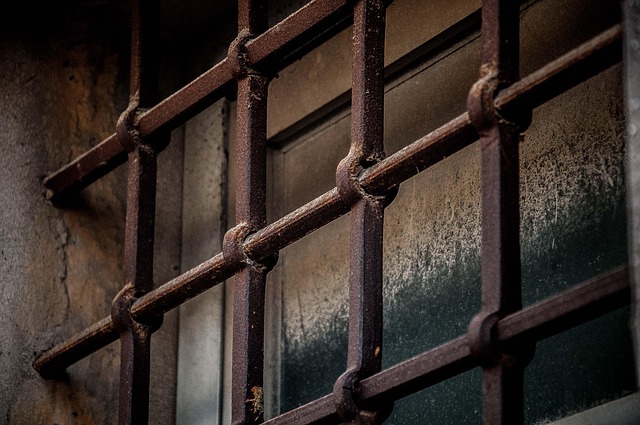Rural and urban areas face differing challenges in DUI legislation due to population density and resource allocation disparities. Rural regions often have perceived "loopholes" with less stringent regulations, while urban centers enforce tighter policies. These gaps impact prosecution and public perception, requiring tailored solutions for uniform, fair enforcement across all regions, addressing loopholes in DUI legislation.
In the vast landscape of legal disparities, rural and urban areas exhibit stark contrasts when it comes to DUI (driving under the influence) laws. This article delves into the intricate details of these differences, exploring how geographical factors shape legislation and enforcement strategies. From understanding the nuances of rural and urban DUI laws to examining loopholes in rural legislation, we analyze whether urban DUI enforcement is stricter or fairer. Additionally, we compare punishments across regions, shedding light on potential biases and the need to bridge the gap in DUI law consistency.
- Understanding Rural and Urban DUI Laws
- Loopholes in Rural DUI Legislation
- Urban DUI Enforcement: Stricter or Fairer?
- Comparing Punishments: Rural vs Urban
Understanding Rural and Urban DUI Laws

In the realm of driving under the influence (DUI) laws, rural and urban areas often find themselves on different pages due to contrasting legal landscapes. Rural communities, with their lower population densities and unique geographical features, may have less stringent DUI regulations compared to bustling urban centers. This disparity can lead to what some refer to as “loopholes in DUI legislation,” where the strictness of laws varies greatly based on location. Urban areas, with their complex web of traffic rules and enforcement, tend to have more consistent and tightly woven DUI policies, aiming to curb impaired driving throughout the metropolis.
In contrast, rural jurisdictions might face challenges in enforcing DUI laws due to limited resources and smaller police forces. This can potentially result in fewer roadside checks and less aggressive prosecution of DUI offenses. As a result, individuals living or visiting rural areas may perceive different implications regarding alcohol consumption and driving, compared to their urban counterparts. Understanding these disparities is crucial for navigating the complexities of DUI laws, especially when advocating for fair and consistent enforcement across all regions.
Loopholes in Rural DUI Legislation

Despite efforts to tighten drunk driving laws, rural areas often face unique challenges when it comes to DUI legislation. One significant issue is the existence of loopholes that can be exploited, leading to more lenient penalties for those caught driving under the influence. These gaps in the system may include lower blood alcohol limits or reduced sentences compared to urban settings. The reasons behind these disparities are multifaceted, ranging from lower population densities making enforcement less efficient to a lack of resources allocated to rural law enforcement agencies.
The impact of these loopholes can be profound, as they may discourage reporting and prosecution, potentially increasing the number of individuals who drive while impaired in rural areas. Addressing these challenges requires a comprehensive approach that considers the specific needs and constraints of rural communities, ensuring fair and effective DUI legislation without leaving gaps that could compromise public safety.
Urban DUI Enforcement: Stricter or Fairer?

In urban areas, DUI enforcement often faces unique challenges due to higher population densities and diverse cultural norms. While this can lead to stricter regulations and increased patrols aimed at deterring impaired driving, it also raises concerns about potential loopholes in DUI legislation. Some argue that urban policing strategies may inadvertently disproportionately target certain demographics or communities, leading to debates around fairness and equality.
The complex urban landscape can create situations where individuals might exploit perceived gaps in the law. Loopholes in DUI legislation could allow for creative interpretations of alcohol consumption and impairment, especially in areas with a high concentration of bars and restaurants. This dynamic necessitates constant review and adaptation of enforcement practices to ensure that safety measures remain effective without compromising principles of justice and fairness.
Comparing Punishments: Rural vs Urban

In the battle between rural and urban DUI laws, punishments often reveal stark contrasts. Rural areas, with their lower population densities and perceived reduced risks, sometimes exhibit more lenient sentencing guidelines. This can lead to what some call “loopholes in DUI legislation,” where offenders may receive lighter penalties compared to their urban counterparts. For instance, reduced jail sentences or lesser fines might be handed down for similar offenses.
This disparity raises questions about the consistency of justice and the effectiveness of DUI laws across different landscapes. Urban jurisdictions, on the other hand, often have stricter enforcement due to the higher visibility of drunk driving’s impacts in densely populated areas. The consequences can be more severe, reflecting the urgency to deter behaviors that pose greater risks to urban residents and infrastructure.
In conclusion, the disparities between rural and urban DUI laws highlight important considerations regarding public safety and justice. While urban areas have stricter enforcement measures, rural regions often face challenges due to loopholes in legislation. Addressing these gaps is crucial to ensuring consistent and fair punishment for all drivers, regardless of their location. By understanding and comparing these laws, we can advocate for more equitable DUI policies, ultimately aiming to reduce drunk driving across the board.






